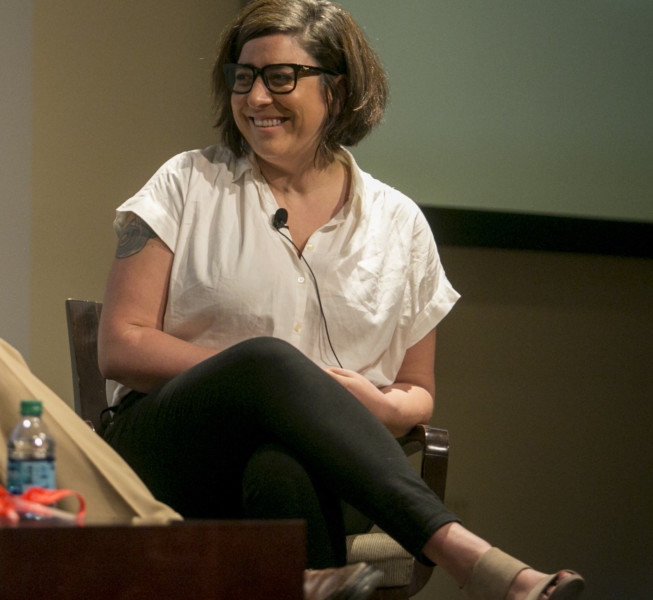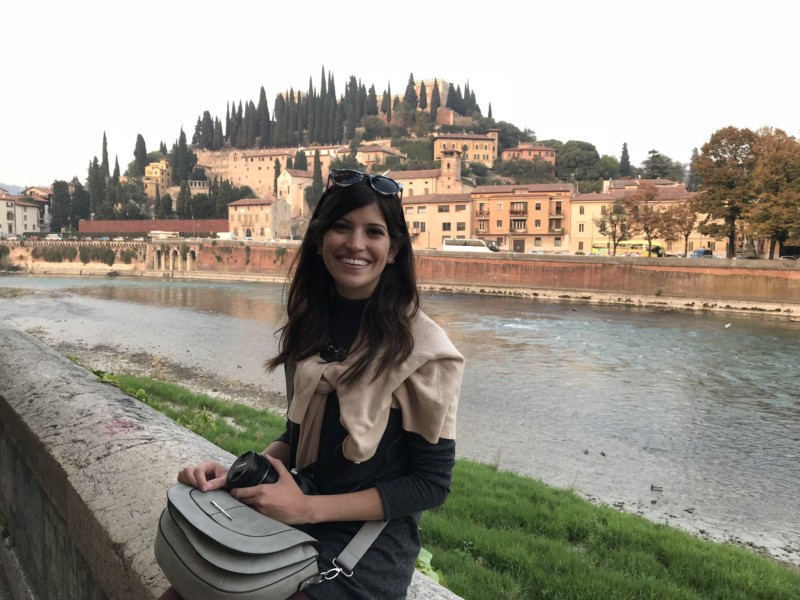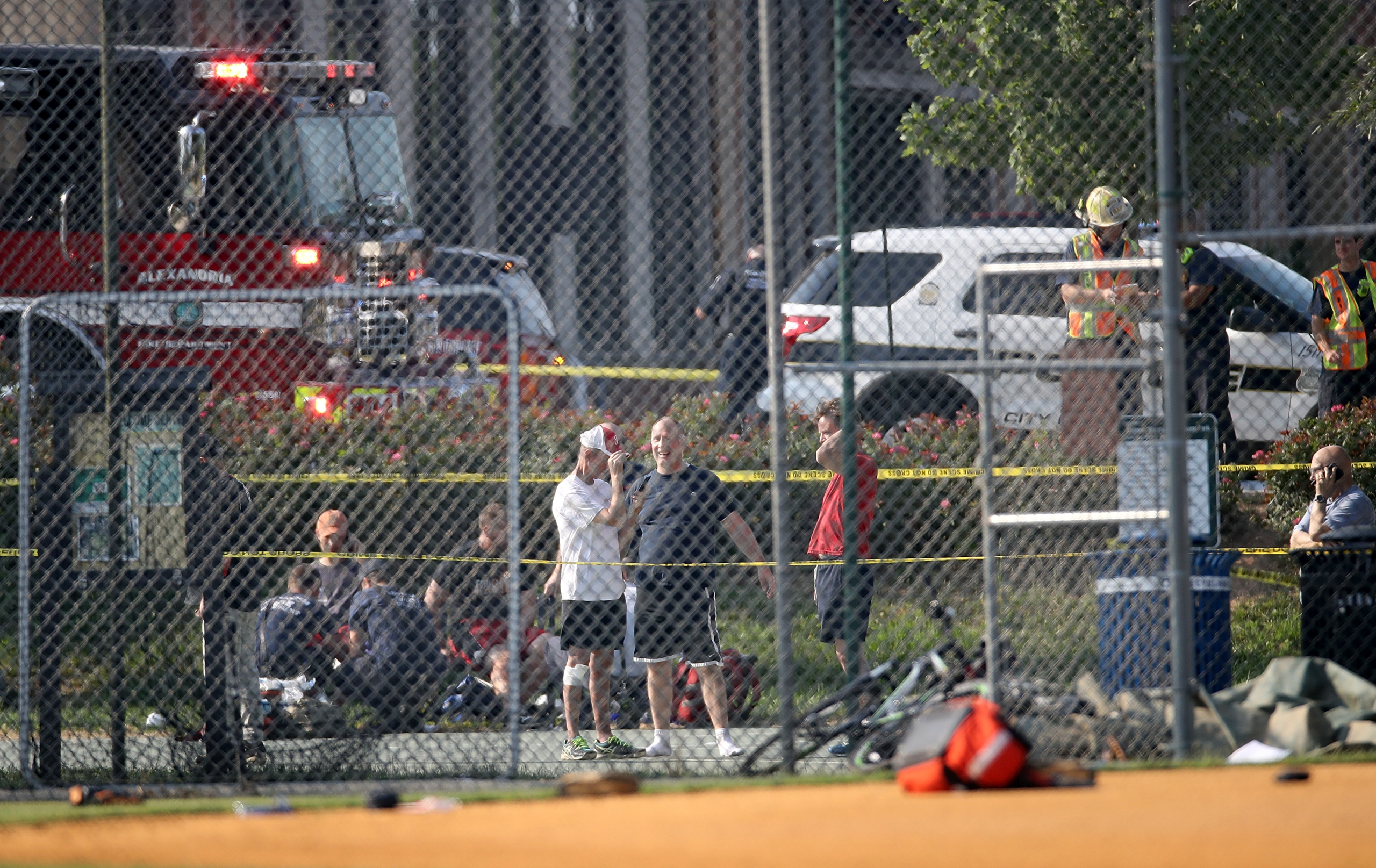Sign up for The Media Today, CJR’s daily newsletter.
June 14, 2017, could have seen a mass assassination, but it didn’t. House Majority Whip Steve Scalise; Senator Jeff Flake; and a number of other legislators, aides, and lobbyists could have been killed, but they weren’t. The tensions between red and blue America could have hit boiling point—inflamed by outrage at a politically motivated mass murder—but they didn’t. In the end, with the exception of one thing gone terribly wrong, everything seemed to go remarkably right.
BuzzFeed’s Kate Nocera and Lissandra Villa set out to unpack these contingencies in a deep-dive published Monday—a forensic account of the nine minutes after gunman James T. Hodgkinson opened fire on a Republican congressional baseball practice, and the days, weeks, and months that followed. Members of the GOP team were wrapping an early-morning batting session in Alexandria, Virginia, when Hodgkinson—who’d been living out of a van near the field and reportedly had a list of targets in his pocket—started shooting. Scalise was hit in the hip and taken to Medstar Washington Hospital Center in a critical condition. Capitol Police officers Crystal Griner and David Bailey were also injured while engaging the gunman. Hodgkinson later died at George Washington University Hospital—the sole fatality of a morning that easily could have been much deadlier.
ICYMI: Viral BuzzFeed clip shows the dangers of fake videos on the web
Nocera and Villa’s piece focuses on the toll the incident took on those who experienced it, but also on the razor-thin margins that make a “what if?” story. In one graf, they lay out the “series of miracles” that occurred that day, which included the first bullet deflecting away off a fence, and the exact body position of lobbyist Matt Mika—who was critically wounded, but not hit in the heart, as he might have been.
“It came up in every single interview that there were a number of miracles on the field that day,” Nocera tells CJR. “It just was repeated so many times that it was easy for us, by the time we got to that section, to list [them].” In early interviews, the two reporters asked open-ended questions, encouraging their subjects to walk them through what happened on their own terms. “That’s how a lot of details that we wouldn’t have known to ask about came up,” says Villa.

BuzzFeed’s Kate Nocera. Photo by Ilana Panich-Linsman
Those details didn’t just keep a group of influential people alive, but also rippled through subsequent media coverage of the shooting. Washington-based reporters including Villa rushed to the scene in the aftermath (Nocera is BuzzFeed’s DC bureau chief, but was asleep in California when the news first filtered through.) The story continued to make headlines as Scalise’s condition stabilized. Pretty quickly, however, it faded from public consciousness.
There were no funerals, as far as the players went, and there were no special elections, and then there was no trial. Because the shooter died, and because everyone else lived….everyone just sort of moved on, except for the people who were there that day.
“There were no funerals, as far as the players went, and there were no special elections, and then there was no trial,” says Villa. “Because the shooter died, and because everyone else lived….everyone just sort of moved on, except for the people who were there that day.”
Many of those at the practice believe the shooting story was shelved too quickly, and were keen to contribute when Nocera and Villa told them they were working on a detailed narrative of the day’s events. While some victims were reluctant to talk, early interviews with Mika and with Roger Williams—the Texas congressman who was injured in the incident and gave a memorable press conference on crutches later the same day—convinced others to buy into the project. Nocera says Scalise tried to convince the Capitol Police to release agents Griner and Bailey for interviews, only to run up against its rigid, no-press-allowed policy.
ICYMI: A local paper’s dogged search for details about Alexandria shooter
Nocera and Villa reconstructed the agents’ heroism through the testimony of others; as Nocera puts it, “A lot of these guys [who were there] are incredibly close to Bailey and Griner at this point; they text with Bailey every day, they have dinner with their families, they’re like a community now.” They also drew on a meticulous prosecutor’s report based on close to 200 interviews, attended this year’s first open GOP baseball practice, and toured the field separately with a guide, walking through the morning’s events and seeing the remaining bullet holes for themselves. “It really brought it home, I think, seeing how trapped people would have been on that field,” says Villa.

BuzzFeed’s Lissandra Villa. Courtesy photo.
The intimacy of the piece, however, mainly comes across in the moving firsthand accounts of those who were shot or nearly shot. Those people are mostly public figures who have day-to-day dealings with the press, but they are also now trauma victims—a point Nocera and Villa put front and center in their piece. Nocera says she treated her interviews like other sit-downs with politicians. Nonetheless, “Roger Williams feels like it’s part of his existence as a public servant, now, to talk about this incident,” she says. “This is part of who Steve Scalise is now. The two things go together forever.”
Longer pieces on “what if?” moments can feel like a luxury, but actually do the public, and the historical record, an important service
The idea for the piece came from BuzzFeed Political Editor Katherine Miller, and followed on from the late-January crash involving an Amtrak train carrying Republican legislators to a retreat in rural Virginia (“We were like, ‘Wow, that’s a lot for one group of people to go through in a year,’” Nocera says). In the four months between the story’s genesis and publication, the Parkland, Florida, school shooting—and the #NeverAgain movement it spawned—has lent a notably different tenor to reporting on shootings.
Linking the baseball field attack to the gun debate has always been a fraught exercise, given that so many of the lawmakers present are strong defenders of the Second Amendment. Nocera and Villa do a nice job situating this incident on what Nocera calls “a continuum of a lot of very tragic days in the last year”—humanizing the politicians who were involved, and reminding a world that had moved on that this could easily have ended up being a historic, agenda-shifting tragedy in its own right.
The Trump news cycle is so fast-paced that it’s become commonplace for important stories to be pushed aside before the public can parse their full significance. Longer pieces on “what if?” moments can feel like a luxury, but actually do the public, and the historical record, an important service. “When we would ask members [of Congress] about [why the shooting story was swiftly forgotten], what they would always say to us was, ‘Well, everyone lived,’” says Nocera. “It would have been a different story had it turned out a different way. But everyone lived, and everyone has jobs to do. [In interviews] they’d say, ‘We’re in Congress, we have to keep moving on, keep moving forward.’”
ICYMI: The Trump effect spreads to Jerusalem
Correction: An earlier version of this article wrongly attributed the following quotation to Lissandra Villa, when it was actually said by Kate Nocera: “A lot of these guys [who were there] are incredibly close to Bailey and Griner at this point; they text with Bailey every day, they have dinner with their families, they’re like a community now.”
Has America ever needed a media defender more than now? Help us by joining CJR today.



